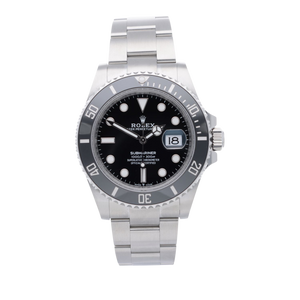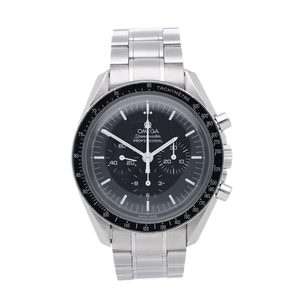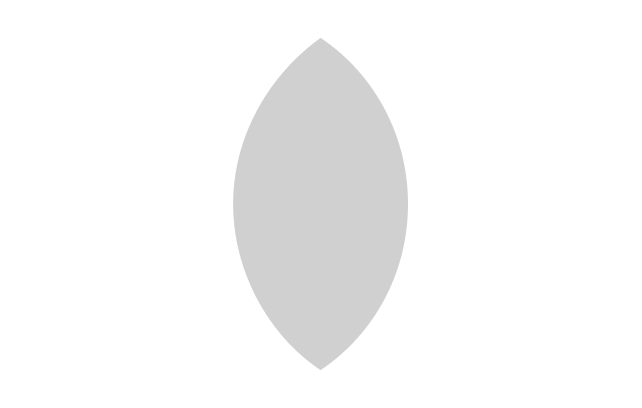total station
What is that actually?
Many wristwatches feature a scale from approximately 500 to 60 on the slanted edge of the dial or directly on the case edge. This is the so-called tachymeter scale – it not only serves as an attractive decoration on men's watches, but also has a practical function. We'll explain exactly what a tachymeter is in today's blog post.
What is a tachymeter anyway?
A quick look at the history of the tachymeter reveals that measuring speeds has a long tradition. The word "tachymeter" originates from ancient Greek, where it is composed of the Greek words "ταχύς tachýs" (fast) and "μέτρον métron" (measurement or scale).
The tachymeter on wristwatches is usually located directly on the bezel or outer dial. The tachymeter scale, including its speed information, is therefore easy to see and cannot be overlooked. A stopwatch function is required for measuring speed. While it is possible to wait until the second hand has completed a full rotation, this is much more convenient with the stopwatch function. This is precisely why the tachymeter scale is found on almost all chronographs.
How does a tachymeter work?
Now we come to another important question: How exactly does this tachymeter work? The tachymeter scale represents the inverse of the hour that has passed since the start of timekeeping. Normally, the countdown begins at exactly 12 o'clock. However, there are also some wristwatches where the tachymeter scale begins at 6 o'clock.
An example to illustrate:
After 15 seconds, 1/240th of an hour has passed, because an hour has a total of 3600 seconds. Therefore, at 15 seconds, the value is 240. At 30 seconds, 1/120th of an hour has passed, so the value on the scale is 120.
How can speed be calculated using a tachymeter?
To measure speed, you need to know the distance. This process is easiest with a distance of 1 km, as no further conversion is necessary. However, if the distance is a different distance, the value read on the tachometer scale still needs to be converted. For the sake of simplicity, we'll use the aforementioned distance of 1 km in our following example:
Let's imagine we covered a distance of 1 km in 40 seconds. In this case, our tachometer would display a value of 90:
90 x 1 hour x 1 km = 90 km/h
This calculation method applies not only to measuring car speeds, but also to ships. It can also be used to determine the speed of a filling process.
Of course, the tachymeter isn't just designed for measuring high speeds; it can also be used for running or hiking distances. For this, the reference value of the measurement simply needs to be adjusted.
Example : Imagine we run a distance of 200 m in 50 seconds. In this case, the tachymeter scale would show the value 72:
72 x 1 hour x 0.2 km = 14.4 km/h
Once you know the distance, you can easily calculate speeds.
FAQ
In the final part of our blog post, we'd like to address the most frequently asked questions about wristwatches with tachymeters. These include the following:
Are there alternatives to the tachymeter?
These days, tachymeters are becoming less and less commonly used. This is understandable, given that in the modern digital age of smartphones, navigation devices, and the like, there are now much simpler options. Nevertheless, the tachymeter in watches is still a nice gadget, and the tachymeter scale is an attractive decoration.
Who can particularly benefit from a tachymeter?
Watches with this practical function are sure to look great on the wrists of runners and sport pilots. Furthermore, speed measurement with a tachymeter is also useful on the water, for example, for captains. The same applies to measuring flow velocity. People who frequently work with water can certainly benefit from such a chronograph.
Which brands prefer watches with tachymeters?
Special tachymeters can be found on Alpina watches , for example. Breitling also continues to produce watches with elegant tachymeter scales. Of course, this also applies to many other brand manufacturers.
Why do most tachymeter scales only go up to a maximum of 500?
Most scales on standard wristwatches often only go up to a maximum of 500 units per hour. In fact, the value is usually only up to 400. The answer to why is actually quite simple: if the tachymeter scale went beyond this value, the measurement would be far too inaccurate. After all, even small deviations of just a tenth of a second above 500 result in enormous deviations in the units. Therefore, depending on the watch, the scale only goes up to a maximum of 500.
Can I also measure my heart rate with a tachymeter?
When a doctor measures your pulse, the counting begins either when the second hand is at 12 o'clock or 6 o'clock. This means your pulse can also be easily read on the tachymeter scale.












